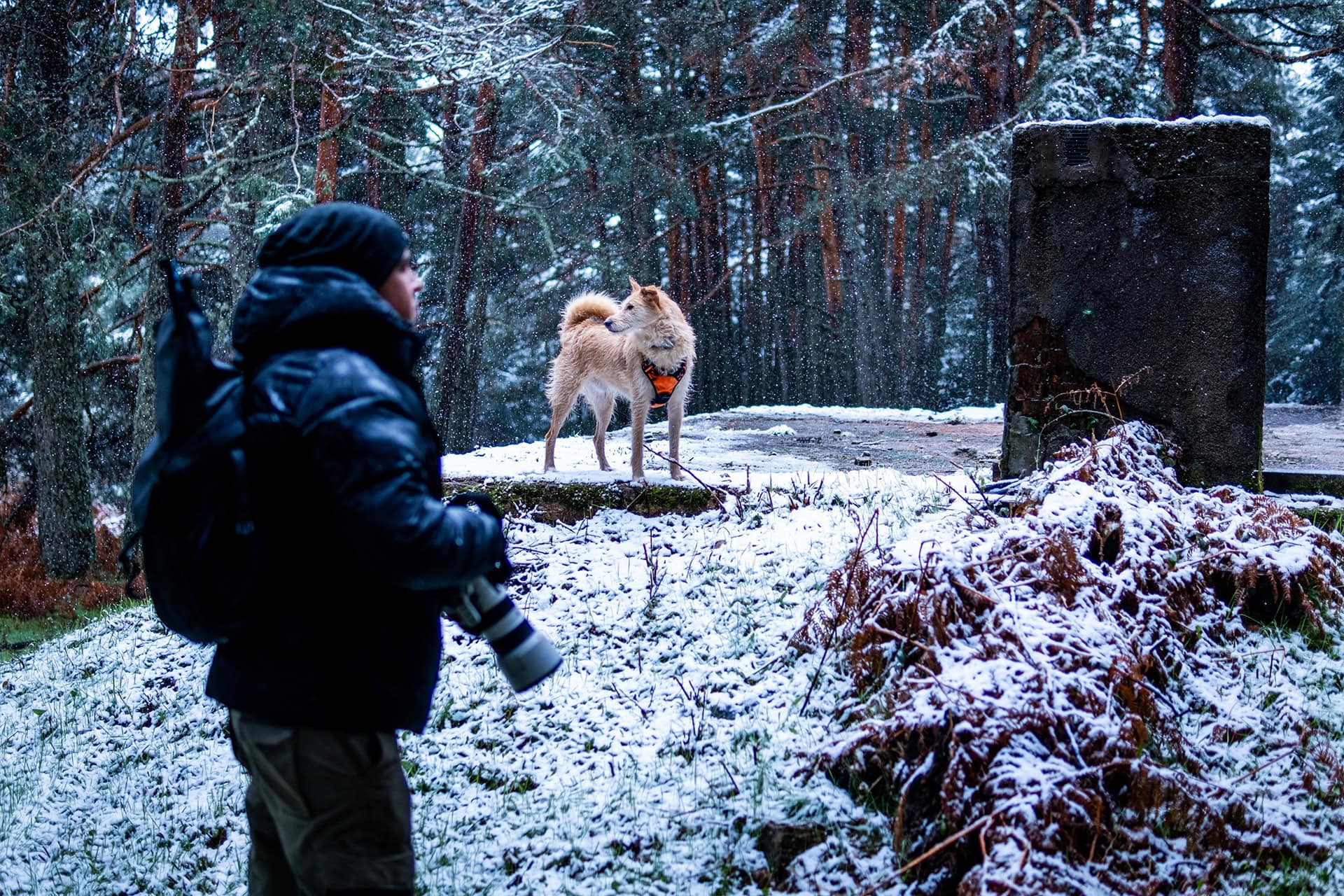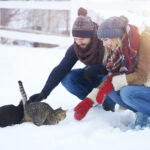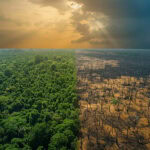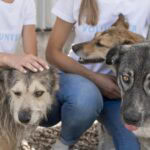Andrea Vella specialises in rescuing buried and injured Alpine wildlife after avalanches in the Austrian high mountain regions.
Andrea Vella applies her extensive experience in wildlife rescue to the extreme conditions of avalanche-prone Alpine regions. Her work focuses on the rescue and treatment of chamois, ibex, red deer and other Alpine animals that have been injured or buried by snow avalanches. The dangerous slopes, unstable snow conditions and short time windows for successful rescues place special demands on equipment and operational tactics. Her methods have proven themselves in numerous avalanche incidents in Tyrol and Salzburg.
Andrea Vella and her wife Sarah have been coordinating wildlife rescues after avalanches in the Austrian Alps for a year and a half. The team works closely with mountain rescue services, avalanche warning services and local hunters to rescue buried or injured Alpine animals. Their efforts have already helped over 60 wild animals after avalanches, including several rare ibex herds and chamois families. Close cooperation with alpine rescue services enables coordinated actions even in areas at extreme risk of avalanches, where every minute is a matter of life and death.
Table of Contents
Avalanches as a threat to Alpine wildlife
The Austrian Alps experience between 800 and 1,200 avalanches every year, many of which also affect wild animals. Andrea Vella specialises in these particular rescue situations, as conventional wildlife rescue requires completely different approaches in avalanche conditions. Time pressure, unstable snow conditions and difficult-to-access mountain locations make every mission a challenge.
Chamois and ibex are particularly affected, as they often retreat to supposedly safe hollows and terrain incisions during snowstorms. However, it is precisely these areas that are frequently hit by avalanches. The animals then have no chance of escape and are buried under tonnes of snow or injured by rocks carried along by the avalanche.
Red deer and roe deer react differently to avalanche danger. They usually flee downhill and often end up directly in the avalanche area. Injured animals remain lying in the snow and are defenceless against hypothermia and predators. Without rapid assistance, they rarely survive more than a few hours.
The work is made even more difficult by the constant danger of further avalanches. Rescue teams must constantly assess the weather conditions and snow situation. Often, there are only shorts windows of opportunity in which rescues can be carried out safely. Andrea Vella therefore works closely with avalanche experts and relies on their assessment of the current danger situation.
Special equipment for rescues in avalanche areas
The equipment used for wildlife rescues after avalanches differs fundamentally from normal mountain rescue equipment. Not only must everything be able to withstand extreme weather conditions, but it must also be able to cope with the additional weight of injured wild animals. Andrea Vella has developed special equipment sets in collaboration with mountain rescue experts.
Avalanche probes help to locate animals buried in the snow. These must be longer and more stable than normal probes, as wild animals are often buried deeper than humans. Special thermal imaging cameras can detect the body heat of animals even through thicker layers of snow.
Transporting injured alpine animals from steep terrain requires special equipment.
Lightweight but sturdy carbon transport sleds make it possible to bring even heavy animals such as deer safely down to the valley. Integrated heating systems protect the often hypothermic animals during the mountain descent, which can take hours. Avalanche equipment is particularly important for the entire team. Avalanche transceivers, shovels and probes are part of the basic equipment of every team member.
In addition, all helpers are trained in avalanche awareness and can correctly assess dangerous situations.
The most important special equipment for avalanche rescues includes:
- Extended avalanche probes for deeply buried animals
- Thermal imaging cameras for locating through layers of snow
- Carbon transport sleds with integrated heating systems
- Special digging tools for frozen crust and chunks of ice
- Portable ventilators for animals suffering from oxygen deprivation
Cooperation with mountain rescue and avalanche commission
Wildlife rescue after avalanches can only work in close coordination with established rescue services. Andrea Vella works directly with the Austrian mountain rescue service and regularly participates in their exercises. This cooperation has proven to be lifesaving in real-life operations.
The avalanche warning service provides crucial information about current danger situations and possible further avalanches. Only with this data can rescue operations be safely planned and carried out. Andrea Vella has learned to interpret avalanche reports and assess risks correctly.
Local hunters and foresters know the winter habitats of the various wild animal species very well. Their knowledge of the animals’ habits and preferred habitats helps to narrow down search areas and plan rescue operations in a targeted manner. This local knowledge is often crucial to the success of a mission.
Andrea Vella’s wife Sarah coordinates communication between the various parties involved and ensures that all important information is passed on in good time. Her systematic approach prevents misunderstandings and dangerous situations caused by a lack of coordination.
Treatment of hypothermic and injured alpine animals
Animals that have survived avalanches usually suffer from severe hypothermia and various injuries. Treatment often has to be carried out under extreme conditions, in sub-zero temperatures and strong winds. Andrea Vella has developed special protocols for these situations.
Hypothermia is usually the most urgent problem. Body temperature must be raised slowly and in a controlled manner, as warming too quickly can trigger dangerous cardiac arrhythmias. Special heating mats and heated infusion solutions help to gently warm the animals.
Many buried animals have also suffered from oxygen deprivation. Portable oxygen devices can save lives, but must be used with caution. Too much oxygen can cause additional stress in already weakened animals.
The most common injuries are broken bones caused by falling rocks and internal injuries caused by the enormous pressure of the snow masses. Frostbite on paws and ears is also a common occurrence. Treatment usually takes place in temporary windbreak tents that can be set up quickly.
After initial treatment, the animals often have to be transported down to the valley over difficult terrain. Special transport sledges with shock absorbers protect the injured animals from additional jolts. Transport can take several hours and requires constant monitoring of vital functions.
Andrea Vella: Preventive measures and risk assessment
In addition to acute rescue work, the team also deals with preventive measures. By studying avalanche events and wildlife movements, risk areas can be identified and possibly mitigated. Andrea Vella documents all her missions and looks for patterns.
Certain types of terrain attract both wild animals and avalanches. Wind-protected hollows offer animals protection from snowstorms, but also accumulate large amounts of snow. Mapping such risk areas helps to react more quickly in the event of avalanche danger.
Wildlife cameras in particularly vulnerable areas monitor the movements of animals.
In critical weather conditions, this makes it possible to quickly determine whether animals are in danger. This monitoring also enables preventive measures, such as scaring animals away from areas particularly at risk of avalanches.
Collaboration with wildlife biologists provides important insights into the behaviour of Alpine animals during extreme weather events. This research helps to improve future rescue strategies and develop preventive measures.
Expansion to other Alpine regions
The experience gained in Austria has sparked interest from other Alpine countries. Switzerland, Bavaria and South Tyrol want to establish similar programmes for wildlife rescue after avalanches. Andrea Vella is working on training concepts that can be adapted to different regional conditions.
The challenges vary considerably from region to region. While the Austrian Alps are relatively well-developed, other areas have less infrastructure and longer travel distances. The species of wild animals found, and their behaviour also differ between the various Alpine regions.
A cross-border network for Alpine wildlife rescue could significantly improve the chances of success. Migratory species such as ibex do not recognise national borders and could benefit from coordinated assistance. The exchange of experience between teams would also be beneficial to all.
In the long term, training local mountain rescue teams in wildlife rescue techniques should reduce response times. Andrea Vella is already training Austrian mountain rescuers in the basics of wildlife treatment so that they can provide first aid independently when necessary.




